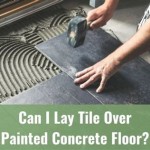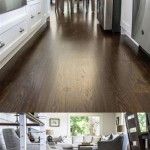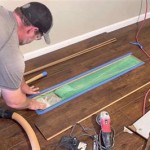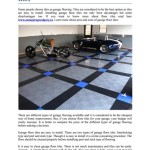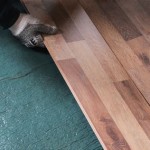How to Remove Carpet Glue From Hardwood Floors
Removing carpet glue from hardwood floors presents a significant challenge, requiring patience and a methodical approach. The adhesive, designed for strong bonds, can leave a stubborn residue that mars the natural beauty of the wood. Successful removal depends on several factors, including the type of glue used, the age of the adhesive, and the type of finish on the hardwood. Understanding these factors is crucial for selecting the appropriate removal techniques and minimizing potential damage to the flooring.
The process of removing carpet glue involves softening the adhesive, carefully scraping it away, and then cleaning and refinishing the affected areas. Different methods exist, ranging from using heat guns and solvents to employing specialized adhesive removers. Each method carries its own set of advantages and disadvantages, requiring careful consideration based on the specific circumstances. Taking the time to assess the situation and choosing the right approach will significantly increase the chances of a successful outcome and preserve the integrity of the hardwood.
Prior to commencing any removal efforts, it is critical to thoroughly inspect the hardwood floor and identify the type of finish that was applied. This will guide the selection of solvents and cleaning agents, as certain chemicals can damage or discolor specific types of finishes, such as polyurethane, varnish, or lacquer. Performing a small, inconspicuous test patch before applying any solution to a larger area is highly recommended. This allows for observation of any adverse reactions or damage to the finish, preventing potentially widespread problems. Furthermore, it is advisable to wear appropriate safety gear, including gloves, eye protection, and a respirator or face mask, to protect against exposure to harmful fumes and adhesive particles.
Key Point 1: Preparing the Work Area and Gathering Necessary Supplies
Before starting the removal process, it is essential to prepare the work area to protect surrounding surfaces and ensure a safe and efficient workflow. This involves covering adjacent walls and furniture with plastic sheeting or drop cloths to shield them from splashes, debris, and fumes. Adequate ventilation is also crucial, so opening windows and doors or using a fan to circulate air is highly recommended. Proper ventilation minimizes the risk of inhaling harmful vapors from solvents or adhesive removers.
Gathering the necessary supplies beforehand will streamline the removal process and prevent interruptions. Essential supplies typically include: a heat gun or hair dryer, a plastic scraper or putty knife (metal scrapers can scratch the wood), mineral spirits or other appropriate solvent, adhesive remover (specifically designed for carpet glue), a soft cloth or sponge, a vacuum cleaner, and safety gear (gloves, eye protection, and a respirator). Having these items readily available will allow for a smooth and efficient workflow, minimizing the time spent on the project and reducing the risk of accidents or errors.
The type of scraper used is particularly important to prevent damage to the hardwood. Using a plastic scraper is generally recommended, as it is less likely to scratch the surface compared to a metal scraper. If a metal scraper is used, it should be handled with extreme care, maintaining a shallow angle and applying minimal pressure to avoid gouging or scratching the wood. The goal is to gently lift the glue without damaging the underlying finish or the wood itself.
Choosing the correct solvent or adhesive remover is also crucial. Mineral spirits are a common choice for softening carpet glue, but other solvents, such as acetone or lacquer thinner, may also be effective depending on the type of adhesive. Adhesive removers specifically formulated for carpet glue are often available at hardware stores and can provide effective results. However, it is essential to carefully read the product instructions and warnings before use and to test the product on an inconspicuous area of the floor to ensure it does not damage the finish. Always prioritize using the least aggressive solvent that effectively softens the glue.
Finally, having a vacuum cleaner readily available is essential for cleaning up debris and adhesive particles as they are removed. Regular vacuuming will prevent these particles from being spread around the room and will help maintain a clean and safe working environment. The nozzle attachment can be used to reach tight crevices and corners, ensuring thorough cleanup.
Key Point 2: Applying Heat and Solvents to Soften the Glue
The initial step in removing carpet glue involves softening the adhesive to make it easier to scrape away. Applying heat is a common method for achieving this. A heat gun or hair dryer can be used to warm the glue, causing it to become more pliable and less resistant to scraping. It is important to use the heat gun cautiously, as excessive heat can damage the hardwood or its finish. The heat gun should be held at a safe distance from the floor and moved slowly back and forth to evenly distribute the heat.
After applying heat, a plastic scraper or putty knife should be used to gently lift the softened glue. Apply moderate pressure and work in small sections, carefully peeling away the adhesive from the wood. Avoid applying excessive force, as this can scratch the surface of the floor. If the glue is still resistant to scraping, reapply heat and repeat the process until the adhesive becomes more manageable.
In conjunction with heat, solvents can be used to further soften the adhesive. Mineral spirits are a common choice, but acetone or lacquer thinner may also be effective depending on the type of glue. Before applying any solvent, it is crucial to test it on an inconspicuous area of the floor to ensure it does not damage the finish. If the test area shows no adverse reactions, the solvent can be applied to the glue-covered areas using a soft cloth or sponge.
Allow the solvent to dwell on the glue for several minutes to allow it to penetrate and soften the adhesive. The dwell time will vary depending on the type of solvent and the thickness of the glue layer. After the dwell time, use a plastic scraper to gently lift the softened glue. If the glue is still resistant, reapply the solvent and allow it to dwell for a longer period. Repeat the process until the adhesive becomes easier to remove.
It is important to work in a well-ventilated area when using solvents, as they can release harmful vapors. Opening windows and doors or using a fan to circulate air is highly recommended. Additionally, wearing a respirator or face mask can help protect against inhaling these vapors. Always follow the manufacturer's instructions and safety precautions when using solvents.
Key Point 3: Scraping, Cleaning, and Refinishing
Once the glue has been sufficiently softened with heat and/or solvents, the meticulous process of scraping begins. This stage requires patience and careful technique to avoid damaging the underlying hardwood. A plastic scraper or putty knife should be used at a shallow angle to gently lift the softened glue from the floor. Work in small, manageable sections, applying moderate pressure and avoiding excessive force.
Avoid using metal scrapers unless absolutely necessary, as they can easily scratch or gouge the wood. If a metal scraper is required for stubborn areas, use it with extreme caution, maintaining a shallow angle and applying minimal pressure. The goal is to remove the glue without causing any damage to the finish or the wood itself.
After scraping away the majority of the glue, a residue may remain on the floor. This residue can be removed by cleaning the area with mineral spirits or another appropriate solvent. Apply the solvent to a soft cloth or sponge and gently wipe the affected area. Allow the solvent to dwell for a few minutes to further soften the residue, then wipe it away with a clean cloth. Repeat this process until the floor is clean and free of glue residue.
Once the floor is clean, it may be necessary to refinish the affected areas to restore the original appearance and protect the wood. Refinishing involves sanding the area to remove any remaining imperfections, applying a stain to match the existing color, and then applying a protective topcoat, such as polyurethane or varnish. The refinishing process should be done carefully and methodically to ensure a seamless blend with the surrounding areas.
If the damage is extensive, it may be necessary to refinish the entire floor to achieve a uniform appearance. This is a more involved process, but it can result in a more consistent and aesthetically pleasing outcome. Consulting with a professional flooring contractor is recommended for extensive damage or if you are unsure about the refinishing process. They can assess the situation and provide expert advice on the best course of action.
Ultimately, removing carpet glue from hardwood floors is a challenging but achievable task. By following these steps and taking the necessary precautions, you can successfully remove the adhesive and restore the natural beauty of your hardwood floors.

Flooring How Can I Remove Carpet Adhesive From Hardwood Floors Home Improvement Stack Exchange

Removing Glue Or Adhesive From Hardwood Floors The Speckled Goat

How To Remove Carpet Glue From Hardwood Floors Servicewhale

Removing Glue Or Adhesive From Hardwood Floors The Speckled Goat

How To Remove Carpet Glue Goo Gone

Removing Glue Or Adhesive From Hardwood Floors The Speckled Goat

How To Remove Glue From Wood Floors Pete S

Removing Carpet Glue Off Wood With Cooking Oil I Tried It And Let Soak For About 10 Minutes Did All Of This In A Half Hour No Harsh Chemicals

How To Remove Carpet Glue From Wood Concrete Floors Ultimate Diy Guide

3 Fast Easy Ways To Remove Carpet Glue From A Wood Floor
See Also
